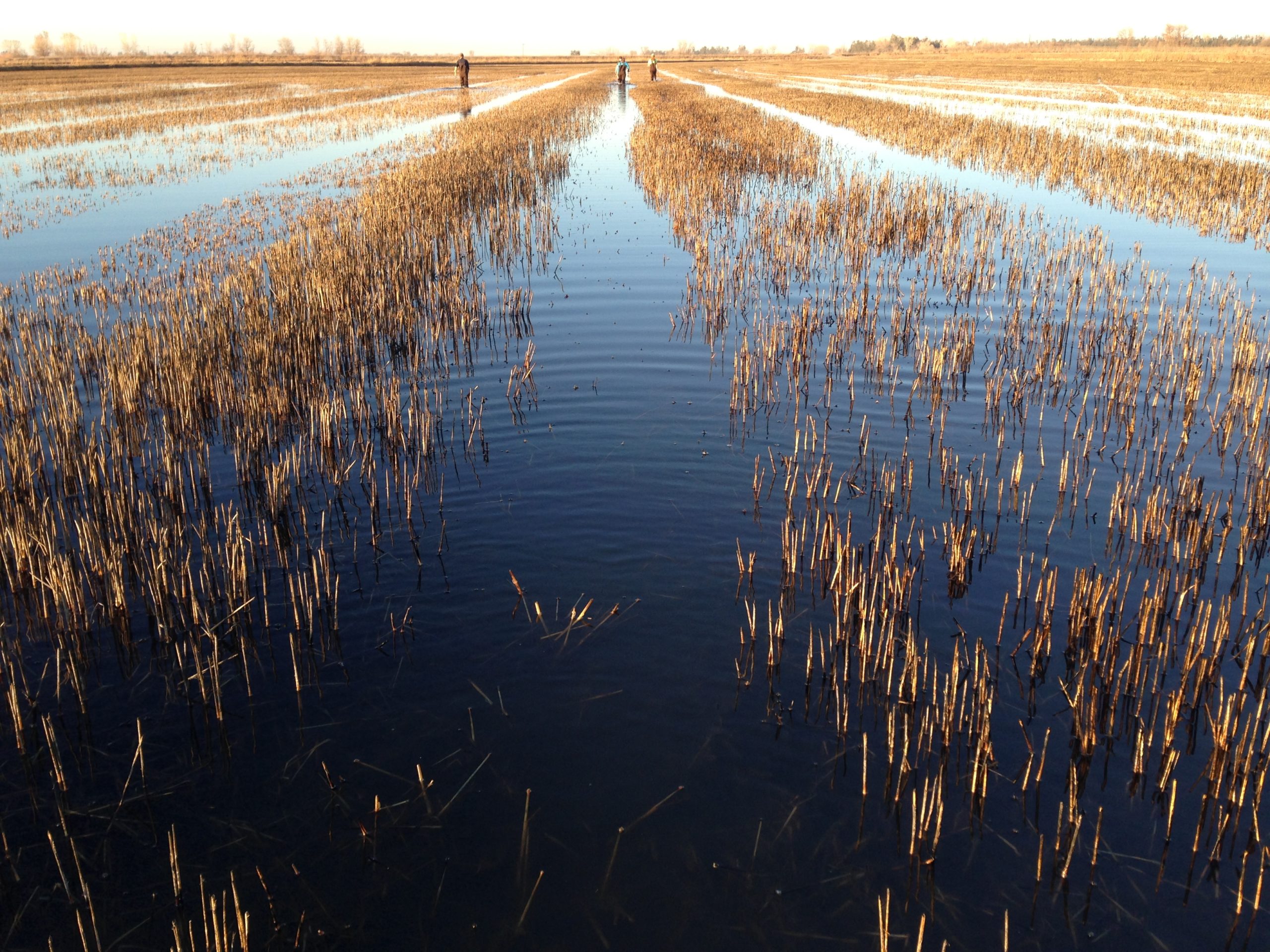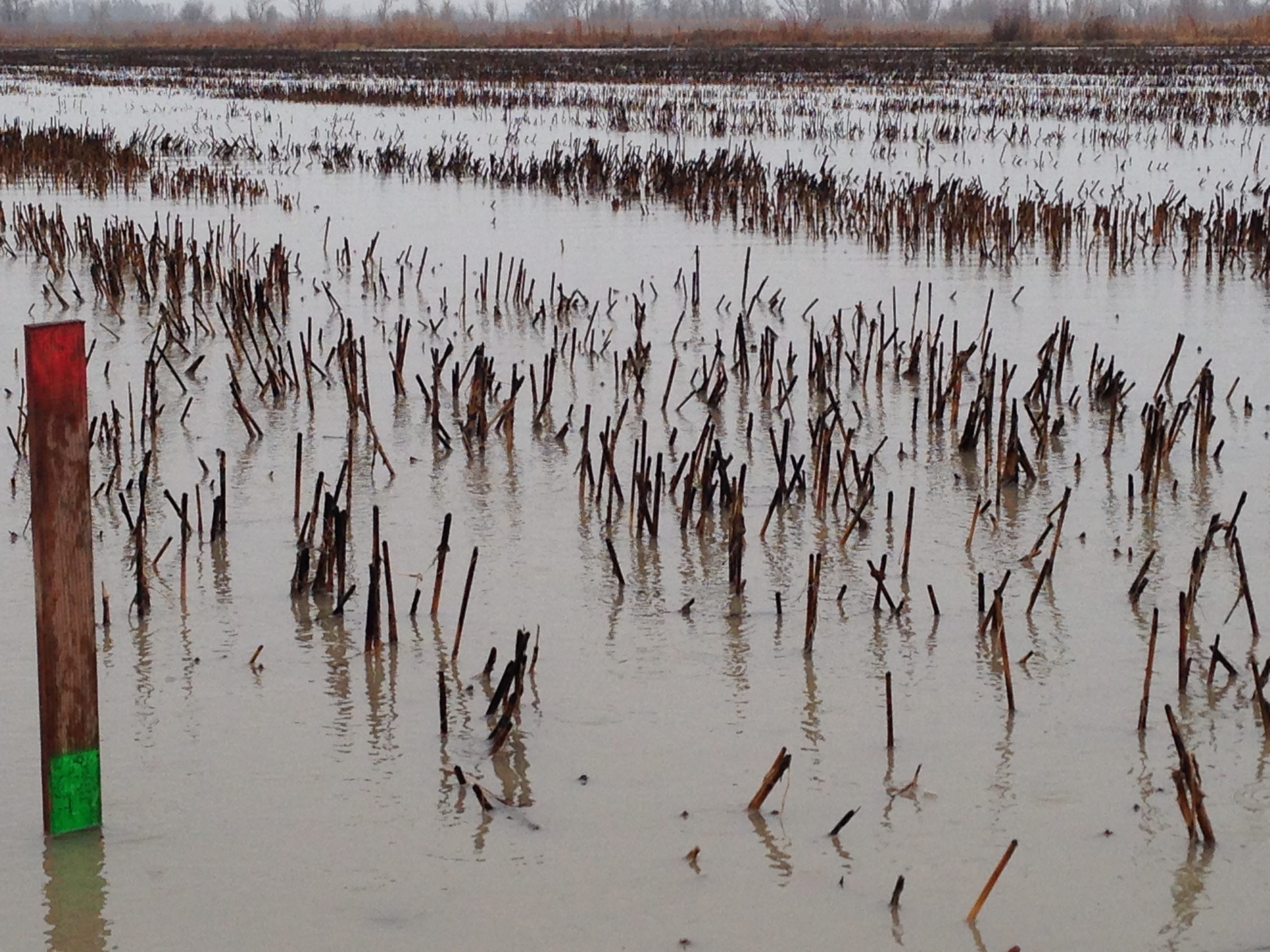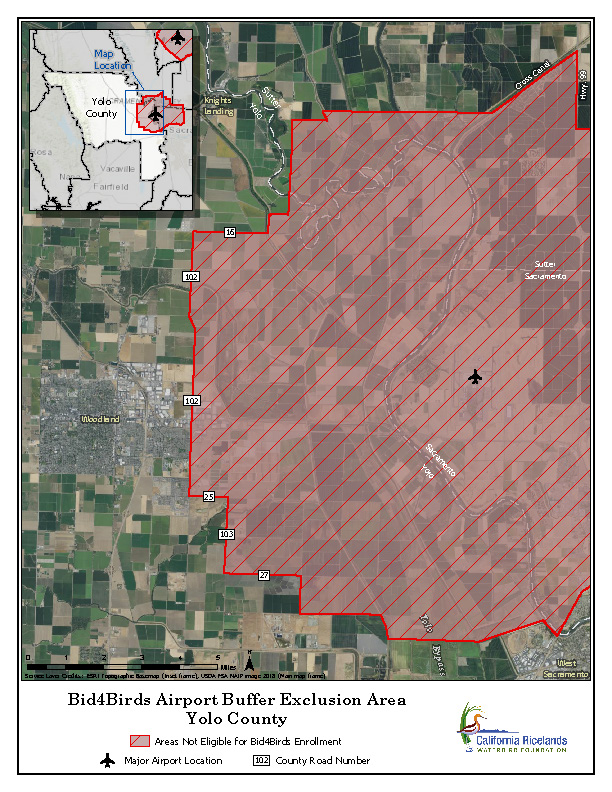Program Summary
The Bid4Birds program focuses on extending the flooding period on ricelands outside of the growing season for the benefit of waterbirds, particularly shorebirds, whose numbers have declined by over 17 million in the last 50 years. While the standard winter flooding period is beneficial for waterbirds that winter in the Central Valley, shorebirds arrive earlier in the fall and later in the spring when most fields and marshes are dry. Providing flooded habitat in both of these shoulder seasons is critical for healthy shorebird populations. Bid4Birds provides incentive payments for rice farmers to implement shallow flooding on their rice fields (including fallow rice fields) during these critical migration periods.
This program requires participants to meet specific conditions in their fields that provide high quality shorebird habitat. Shorebirds require shallow water depths (mudflat to 4 inches), some plant residue which helps create food (invertebrates) for shorebirds, and a clear field of view to spot predators (little to no standing plant residue).
Practice Requirements
Flooding Requirements
- Duration: maintain flooding for 3-4 weeks, followed by an evaporative drawdown of approximately 1 week
- Time window: July 15 to October 6
- Depth: Maintain depths of 2-4 inches for entire contract period, ensuring no less than 75% of each enrolled field is flooded throughout the contract period. Fields uniformly deeper than 4 inches are not acceptable.
- Growers can use surface water or groundwater (or a combination of both) to maintain water on their enrolled fields and are required to provide information on water source used.
- Start Date: The application has a list of start dates (Mondays) in the flooding window. Growers will select which start dates would potentially work best for them. Depending on the bids received, Bid4Birds will work with the producer to select from those chosen start dates. Note: flooding prior to September 1 will rank higher than after (See Ranking and Scoring Process below for more details).
Vegetation Management Requirements
- Fields must have little to no standing vegetation or crop residue.
- Vegetation/residue greater than 4 inches tall must not exceed 10% cover.
- Any combination of the following straw management and incorporation practices should be used to achieve a relatively level surface in the field and reduce organic matter. This will also reduce the likelihood of mosquito propagation.
- Disk, chisel, chop, roll, burn, bale
- The following field conditions will make your bid ineligible for our program:
- Uncut standing stubble
- Mats of cut straw or vegetation covering more than 50% of the field
- Fields with more than 10% cover of standing stubble or vegetation that is greater than 4 inches tall.
Eligible Applications
- Idle or early-harvested rice fields in the Delta and the Sacramento Valley.
- Eligible applicants must be willing to allow Bid4Birds staff to share their contact information and flooding locations and dates with their local mosquito abatement district.
- Minimum bid size is 30 acres.
- Access to ground and/or surface water.
- Fields not planted in rice in the most recent growing season are eligible; however, similar field conditions are required, and practices may be necessary to cut and incorporate standing vegetation or weeds.
Ineligible Applications
- Fields enrolled in other annual incentive programs that provide payment to conduct flooding during the same time window that is proposed for enrollment in Bid4Birds (i.e., NRCS fall flooding practices, BirdReturns Late Summer Farmlands).
- Within 5 miles of Sacramento International Airport and Beale Air Force Base (see exclusion area maps below).
- Fields with more than 10% cover of standing stubble or other vegetation that is greater than 4 inches tall.
- Bids less than 30 acres.
Ranking and Scoring Process
All bids will be ranked and scored by the Bid4Birds Habitat Selection Committee which includes representatives from California Rice Commission, Audubon California, Point Blue Conservation Science, and The Nature Conservancy. The selection committee will assess bids according to standardized methods and use a model selection process to predict the habitat value of each bid. Sites will be scored and ranked based on bid price and characteristics important to habitat quality such as overall acreage, field size and location, timing and duration of flooding, and history of bird use in the general area. Applicants that have later flooding dates and offer competitive pricing will rank higher. Feel free to contact us if you’d like additional information on scoring criteria.
The following items can result in higher scoring bids:
- Fully incorporated rice straw/vegetation
- Close proximity to existing wildlife areas/wetlands
- Providing water at the most valuable times. Below are the time periods when habit needs are the greatest.
- In spring: flooding between March 15 - May 1
- In fall: flooding between July 15 - September 1
The following items can result in lower scoring bids:
- Poorly incorporated straw/vegetation
- Flooding outside of the critical periods. Below are the times when habitat is still needed but less critical.
- In spring: flooding before March 15
- In fall: flooding after September 1
Approximate Selection Timelines
- Program applications will be accepted from May 15 to June 10, 2025
- Analysis and scoring will be conducted by June 23, 2025
- Notices of Awards and Rejections will be issued by July 1, 2025
Program Budget
TBD
Field Condition Examples
Excellent Field Conditions
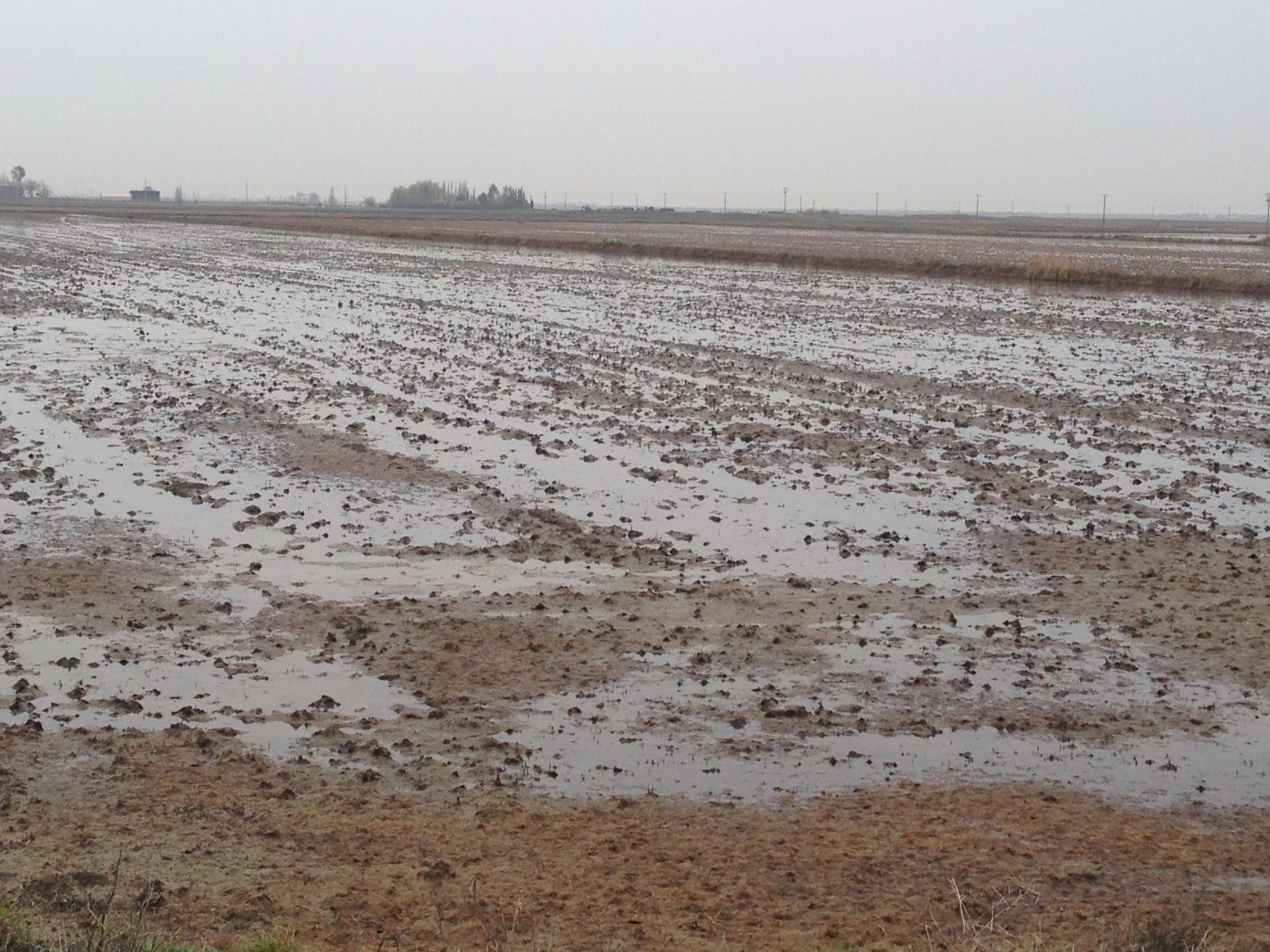

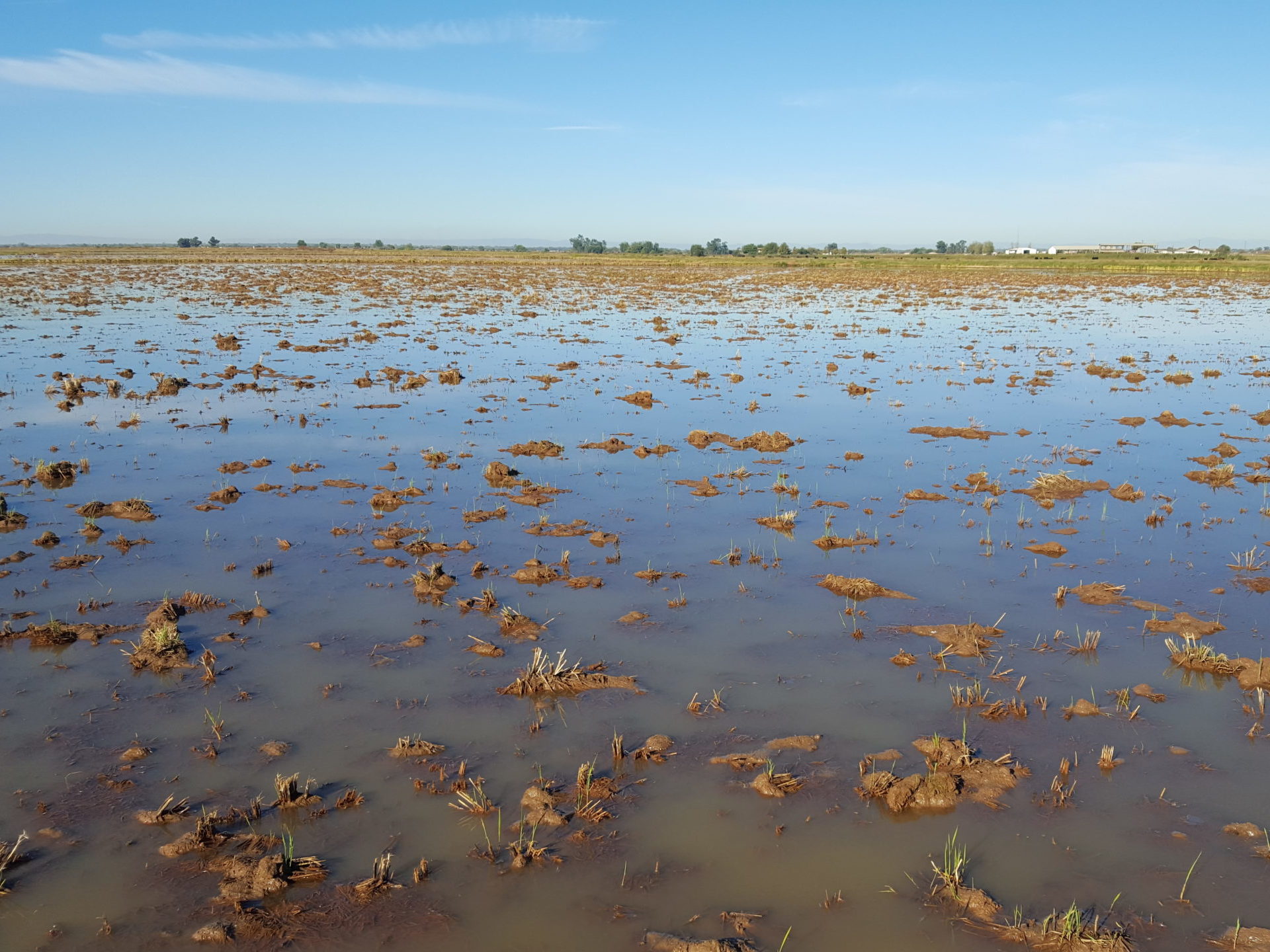
Poor Field Conditions
